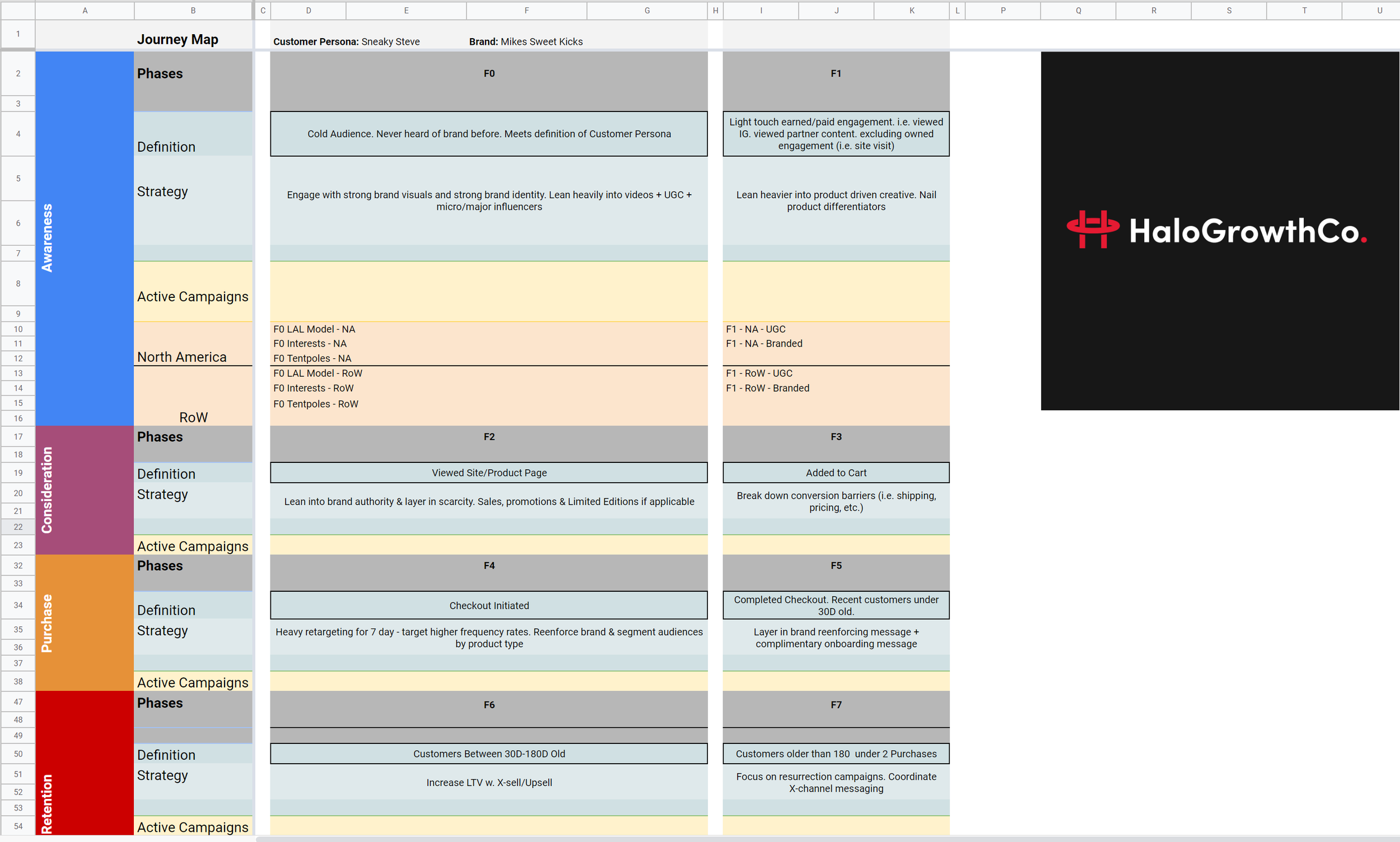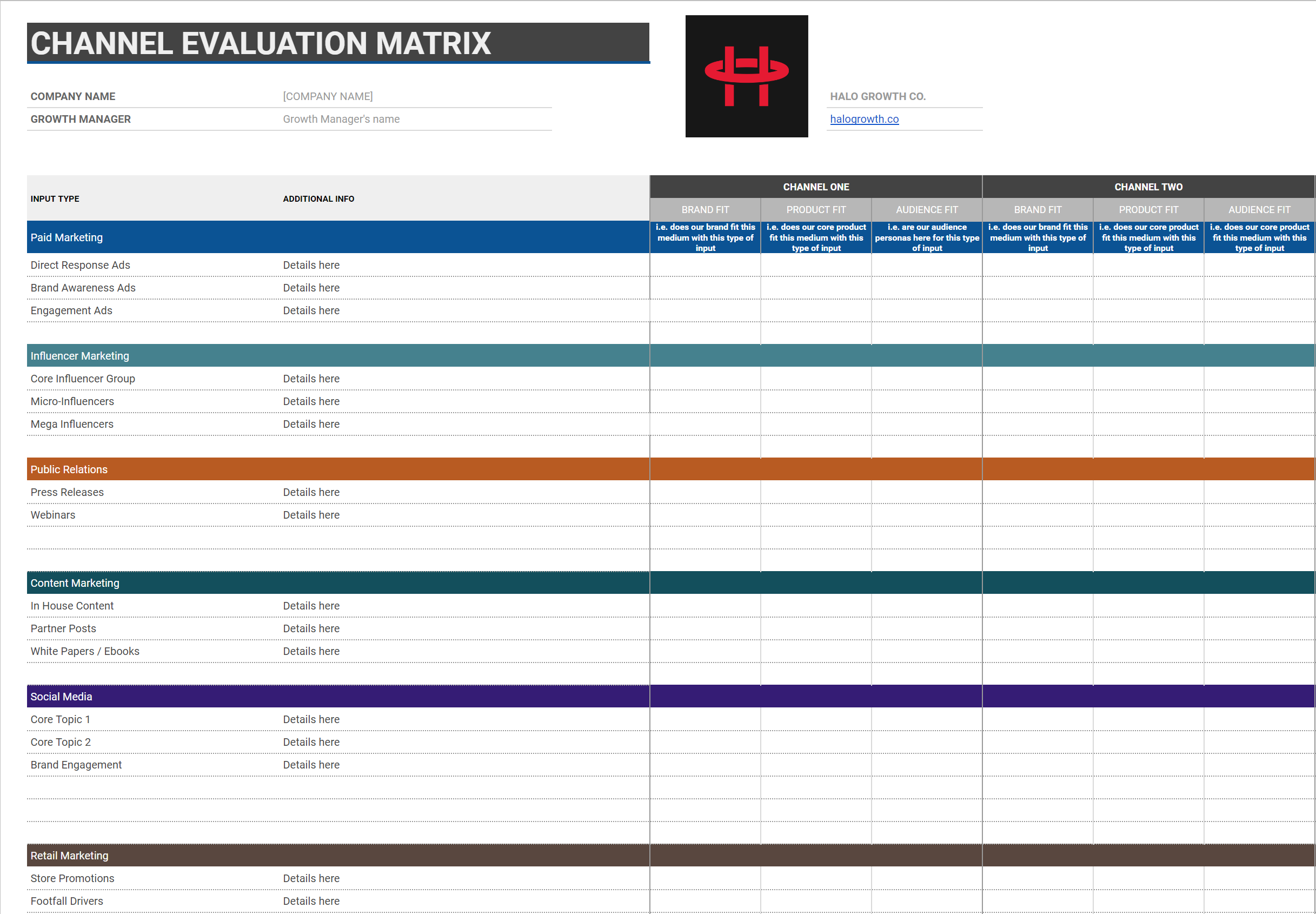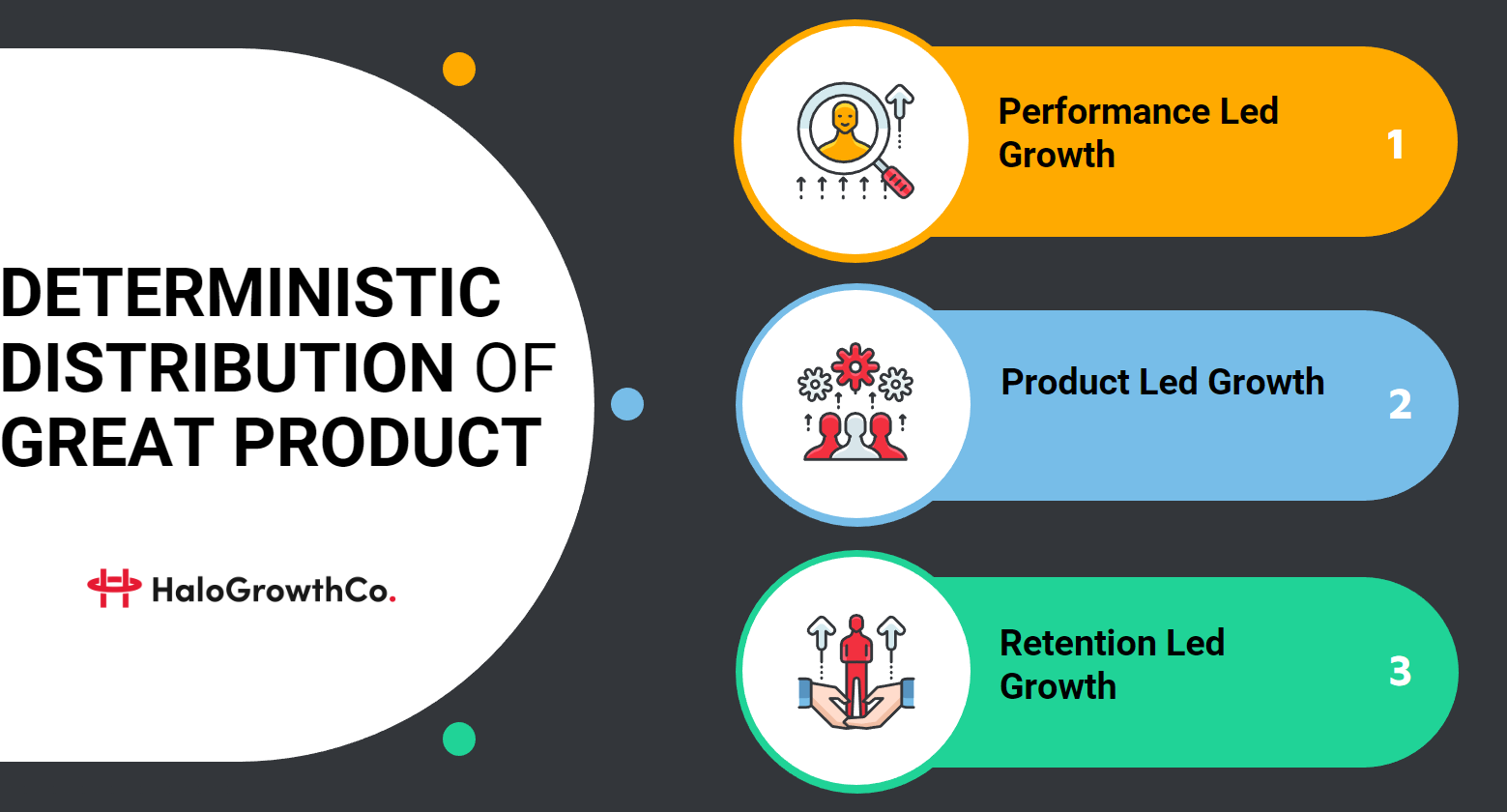What is Growth, Anyway?
Product Led. Performance Led. Retention Led. Or maybe just memes and cat videos
😺
Product Led. Performance Led. Retention Led. Or maybe just memes and cat videos 😺
By now you’ve seen quite a few professionals with “Growth” in their title.
Over the last five years, the discipline has been booming. And rightfully so. Growth, as a discipline, can be highly impactful to just about any business.
But what you’ve likely also noticed is that “growth” does not universally translate to a single set of disciplines.
As it currently stands, it is a bit of a catch-all term.
Employees are not all to blame for this. It’s been used by agencies, employers, marketing programs, and even several online courses.
You’ve seen books, blogs, and articles published in every corner of the internet discussing topics like “growth hacking” and “product led growth”.
And so, as difficult as it is, I am preparred to answer a question many of you reading this will have in your mind:
”Just what the f*** is growth, anyway?”
The 3 main categories of growth: Product, Performance & Retention
In my experience there are three main categories of growth practitioners:
Product Led Growth
Performance Led Growth
Retention Led Growth
Here I will provide a short overview of each, with a more complete breakdown below.
Starting with Product Led, this is the OG discipline that started the boom.
As Brian Balfour describes in his presentation to Relay Ventures, the term “Growth” was first described by Chamath Palihapitiya in his 2005 conversation with Sheryl Sandburg, then COO of Facebook. Originally, he stated that he would “change the product, do some SEO and SEM, apply some algorithms, etc.” [source: Decoder Podcast].
Sherly asked what he called it.
“Growth” he said. “I’ll just be the head of growing stuff”.
Unbeknownst to him, the discipline of Growth was then born.
Over the course of his efforts, Chamath then found that there were a few consistent changes he made that led to exponentially more user growth. Rather than scaling up direct inputs alone, he focused on an “aha moment” for Facebook users.
That is to say, rather than raising SEM budget or capturing more existing demand from SEO, his returns on multiplicative product driven growth programs were much more impactful to the business.
And in these efforts was derived the now famous 7 friends in 10 days growth hack.
At it’s core, this discovery was about Engagement and Retention (which I will expand on as it’s own discipline below). I would encourage you to listen to Chamath’s own words on the subject, but the key take-away was that Facebook created much more engaged users with much more K Factor growth in cohorts that completed a set of behaviors, which in this case, was adding 7 friends in 10 days.
After Facebook reached 1B users, the precedent that was then set for “growth” as a discipline was substantial.
Facebook’s path to 1B users. Source: CNN
Product Led Growth in a nutshell - a deterministic system of product level initiatives that materially impact customer acquisition, retention, and monetization.
Performance Led Growth, on the other hand, leads user or customer growth with scalable inputs and an underlying core principle of money in, more money out.
A core metric often measured by performance led growth practitioners is ROAS (Return on Ad Spend).
Myself being guilty of often asking the question: “What’s the ROAS?”
So much so, my team engraved it on a pen for me.
Linear inputs rely on a lot of active management, depth of expertise, and sometimes good ol’ fashioned deal making (direct selling is, after all, a linear input).
An Example Qualitative Growth Model for a D2C Ecomm company. Source: Halo Growth Co.
In contrast to product led growth, performance led growth relies on 3rd party channels for distribution, and scalable inputs from those channels.
Retention Led Growth takes inputs from linear channels, product experience from on-boarding, engagement, and aha moments; and stretches cohorts for maximum LTV (lifetime value).
Retention Led Growth experts are the least likely of the three to use “Growth” in their title, although one can argue that they have the most impact on growth from a total revenue generation perspective.
Often, you will see retention called out explicitly, or terms like “lifecycle marketing”, “communications manager”, or “community manager”.
Sometimes, they might not even know what they do is “growth” if they constantly live in the insular bubble of customer engagement knowing only the shallow pond of short-term engagements and response rates on a two day window.
Hence, I advocate for a seat at the “growth” table for all customer touch-points, especially retention led efforts.
If you’re not already, setting up a cross functional squad, or even a weekly stand-up where your growth leaders share the latest data and insight on retention goes a long way to garner engagement from this group.
Source: Coelevate
In fact, according to Brian Balfour at Reforge, not focusing on retention is the number 1 reason start-ups fail at growth.
Product Led Growth
Now that we’ve explored a high level overview, let’s take a deeper dive into each discipline and how they contribute to the growth of your product.
Warning: this section will be a bit more advanced and, dare I say, academic in parts.
—
To add clarity to my above points, product Led growth is not new feature development - it is the development of deterministic systems within a product that enhance distribution.
Here’s an example:
Imagine you’re a developer for a mobile gaming app.
You have a team of engineers and a good sense of product market fit with stay at home moms who love to farm your virtual currency.
You know there a few ways you can develop the product in order to grow.
You therefore measure three distinct cohorts with three distinct characteristics (i.e incoming channel, onboarding experience, etc.)
Your metrics are below:
| Variant 1 | |||||
|---|---|---|---|---|---|
| Date | Installs | DAU | Revenue | Product Actions | Crashes |
| 11/12/2018 | 1292 | 1292 | $711 | 2944 | 20 |
| 11/13/2018 | 1121 | 1922 | $1,057 | 4526 | 22 |
| 11/14/2018 | 983 | 2406 | $1,323 | 6417 | 10 |
| 11/15/2018 | 1227 | 3130 | $1,722 | 8070 | 16 |
| 11/16/2018 | 1352 | 3843 | $2,114 | 10466 | 6 |
| 11/17/2018 | 1232 | 4335 | $2,384 | 11382 | 24 |
| 11/18/2018 | 950 | 4535 | $2,494 | 11426 | 24 |
| Variant 2 | |||||
| Date | Installs | DAU | Revenue | Product Actions | Crashes |
| 11/12/2018 | 1393 | 1393 | $822 | 4047 | 1 |
| 11/13/2018 | 887 | 1862 | $1,099 | 6386 | 1 |
| 11/14/2018 | 899 | 2376 | $1,402 | 8035 | 3 |
| 11/15/2018 | 872 | 2797 | $1,650 | 9074 | 39 |
| 11/16/2018 | 1099 | 3399 | $2,006 | 11466 | 44 |
| 11/17/2018 | 1365 | 4153 | $2,450 | 13796 | 16 |
| 11/18/2018 | 1123 | 4526 | $2,670 | 12873 | 38 |
| Variant 3 | |||||
| Date | Installs | DAU | Revenue | Product Actions | Crashes |
| 11/12/2018 | 1172 | 1172 | $727 | 5416 | 8 |
| 11/13/2018 | 1279 | 1959 | $1,214 | 8489 | 5 |
| 11/14/2018 | 1111 | 2462 | $1,526 | 9071 | 18 |
| 11/15/2018 | 1066 | 2921 | $1,811 | 10856 | 30 |
| 11/16/2018 | 1015 | 3295 | $2,043 | 10936 | 29 |
| 11/17/2018 | 1042 | 3673 | $2,278 | 13459 | 32 |
| 11/18/2018 | 1073 | 4035 | $2,502 | 12616 | 33 |
Naturally, growth marketers (especially those with a performance background) gravitate towards total installs. Should all input resources be even, the sum of the output would be a higher immediate “ROAS”.
More advanced growth marketers will SUM revenue from each cohort on a usage window that matches the natural frequency rate of the product (i.e. 7 day window). Calculating, or even predicting revenue through this means may yield another variant as your selection.
Yet therein lies the vanity trap that any great product led growth practitioner should not fall for.
Instead, a great product led growth practitioner will calculate revenue per user, user retention, and forecast cohorts revenue generation over a longer product usage cycle.
Doing so leads to an obvious choice in product variant and a demonstrable example of the power of user retention**.
**N.B - Retention as a product metric is different than retention as a corporate discipline (i.e. lifecycle marketing).
The Reforge Growth Engine with Retention and Engagement front and Centre. Source: REFORGE
In fact, many believe retention and engagement to be a core fundamental of growth. If you can’t get users to realize your Aha moment, and you can’t have them stick around and pay you what you’re worth, you are sailing against strong headwinds towards product-market fit.
This may actually be a trap growth marketers solely focused on performance may fall into. If the platform says the ROAS is good.. then we’re making money right?
Wrong.
I’ll never forget the day I first added up all the reported revenue across all channels. Channel 1 was reporting 50k in revenue driven in the last 7 days, Channel 2 25k, and channel 3 another 50k.
But the business only did 75k.
Where did the extra 50K come from? Clearly there was overlap, and clearly our channels did not live in silos.
From that point forward we became much more sophisticated with our view, measuring blended ROAS, blended CAC (total marketing $/total revenue), and CAC:LTV ratios.
If your CAC:LTV ratio is less than 3 and your platforms are reporting positive ROAS, you have a problem that may be beyond engagement and retention if those core metrics are healthy.
You may, in fact, have ill-fitting synergies between brand, product, and channel.
And for that challenge, we need to stretch our performance led growth muscle.
Performance Led Growth
Performance Led Growth, in contrast to Product Led Growth, focuses on inputs, or as Brian Balfour describes them in Reforge, linear inputs.
Linear is an accurate way to describe them.
There is a direct responsibility overseeing the management of these channels and the “type” of input; often with unique skillsets included in each.
Sales channels, marketing channels, and paid media can all be considered linear inputs, and often follow the operational guidance of a traditional “marketing funnel” (below).
The problem is, these channels don’t, and never will, communicate with one another and relay important information.
By their very nature, they are competing.
Facebook will not inform Google that it has served an impression to you so that Google can improve it’s campaign performance accordingly.
The walled and siloed gardens of data are increasing, not decreasing, despite what some highly paid sales managers may tell you.
The traditional marketing funnel. Source: Neil Patel
Furthermore, customers will engage on multiple channels, talk to people IRL who are in different funnel stages, and move along your marketing journey’s in extremely unpredictable ways.
Embrace the chaos of this, otherwise, you will go crazy.
This, however, does not mean a traditional funnel is not useful.
In my experience, it is still a useful tool for planning.
I still maintain a customer journey map for each brand I support and if necessary (depending on product extension, personas, etc.), further segment them out.
Feel free to access my template here.
Knowing what hypothetical stage your customer is at (even if 100% accuracy of mapping to their correct channel agnostic step in the journey is impossible) is crucial for creating impactful strategy.
A one-size fits all approach does not respect the complexity of modern consumer decision making.
Even if you’re a more transactional or daily-use product, consumers are still making buying decisions based on principles of decision making and barriers that can be removed with the right message, at the right time, to the right audience.
Longer sales cycles or B2B organizations tend to have more complex or layered customer journey maps depending on number of channels involved, touches from sales people, etc.
If you haven’t already, you will need to prioritize your channel distribution mix based on a power law of distribution that compliments the synergies between your brand, product, and channels.
Don’t worry, I’ve create another guide here.
The most common question arising from multiple linear inputs to growth is around multi-touch attribution.
On this subject I recommend pivoting focus to cohort creation by channel, and measuring last-touch inputs by LTV.
The reason for this is two-fold.
1. Multi-touch attribution will never be fully accurate until channels actively communicate between each-other, which they will never do. You can have the most sophisticated attribution software and analytics tools in the world, but they will always be based off of session values, which do not tell the whole story (impressions, engagement, etc.) which often lives within the walled gardens of platforms and channels.
2. Retention is the most impactful revenue driver to your business, no matter your size, scope, or offering. Taking the time to quantify the impact linear inputs have within user retention is a more fruitful exercise than trying to de-dupe ROAS that simply cannot be de-duped.
If it isn’t obviously by now, performance led growth is where I personally have cultivated the most depth of expertise.
If done right, it can be extremely impactful to businesses of all shapes and sizes.
There are, however, many pitfalls to avoid, and it should never be fully managed within a siloed team of media buyers who simply report vanity metrics in a weekly scorecard.
Performance led growth is but one (albeit powerful) mechanism in your overall growth machine.
Retention Led Growth
The most powerful operating mechanic in your growth machine, in my humble opinion, is Retention.
Retention is, and should always be, a recognized discipline within growth.
If I were to be critical of the current ethos of the “Retention” practice in it’s current state, it is that it is far too siloed within direct relationship channels, and needs much more inclusive input within Product and Performance.
I say this for a single, obvious in hindsight truth; the impressions within cohorts you create in the upper funnel are often deterministic of the characteristics you have in the lower funnel, or full LTV lifecycle.
Simply put: first impressions matter.
And they should matter to the person running your email campaigns, or SMS, or Messenger, or e-mail, or carrier pigeon — basically whatever means in which you nurture loyalty.
Far too often I’m seeing really talent and impactful growth managers tunnel vision too much into their channels. “This email got X open rate and this segment delivered X revenue”.
Cool story; but why does it matter? How did those segments arrive at their destination? What is their predicted LTV? What is our resurrection strategy if they don’t get to the Aha moment or 2nd purchase?
Similar to performance marketers, retention marketers can often times get caught up in senseless vanity metrics or useless features sold by their ESP. They can get pinned down in the everyday block and tackle of creating and managing retention campaigns, coordinating creative and development resources, and deploying across channels.
Couple this with the fact that the customer is getting over-loaded with messages on decaying channels (i.e. email), you can really struggle to operate as a function of growth.
Source: Reforge Blog
And is if their job wasn’t already hard enough, customers expectations are increasingly demanding.
Think about this: when was the last time you got frustrated with a web site or an app? Was it a legacy company? Monopoly? Government organization? Lacking incentives to overcome these challenges really shows up in the UX.
Would you be encouraged to open their email if they wrote to you after that experience? Would you sign up for their SMS campaign or want to be notified when they have an announcement?
Probably not.
Hence, these become the challenges that great Retention Led Growth Manager’s will tackle both near term and in the future. They should be demanding a seat at the table as it relates to a more holistic approach to growth, and adoption of sound growth strategy at all ends of the funnel.
Conclusion
Organizations tend to get either focused too much on one or two disciplines of growth, often ignoring the broader relationship between all disciplines.
It’s okay to create focus in what really drives the business forward, but have the data and evidence to back it up.
Whether it’s being product led, performance led, or retention led, it should all sum up to meaningful growth and you should have the mechanics mapped out and quantified.
Anything less would be a disservice to yourself and your brand.










